Instagram has come a long way from the square photo-sharing app it started out as in 2010. The app has now become a bustling ecommerce platform, where businesses of all sizes can sell products through the Instagram feed.
Back in 2020, Instagram’s monthly active users passed the one billion mark. Instagram now has over two billion monthly active users and 500 million active daily users. Approximately 20.3% of all active internet users use Instagram daily.
Plus, users are increasingly using the platform to buy products––44% of people say they use Instagram to shop weekly.
Intuitive features like the shopping tab, product tags, and Buy buttons are encouraging people to make purchases through the platform. But how can brands stand out amid the competition?
In this complete guide, find everything you need to know to build a successful Instagram ecommerce strategy in 2024.
What is Instagram ecommerce?
Instagram ecommerce means using Instagram to promote, advertise, and sell goods. Ecommerce businesses can exist exclusively on Instagram or sell products from a separate website too.
Brands must have a business account to be able to create an Instagram Shop and showcase a catalog of products. Instagram Shops then acts as a virtual storefront for brands.
Instagram Shops is particularly popular with younger generations. Currently, in the US, Gen Z and millennials are the most likely social network users to have made at least one purchase via a social channel.
Part of this popularity is because Instagram shopping makes the buying process seamless.
For example, while scrolling on the Instagram Explore section you may see a perfume, tap Shop Now, add it to your shopping cart, and check out within the app.
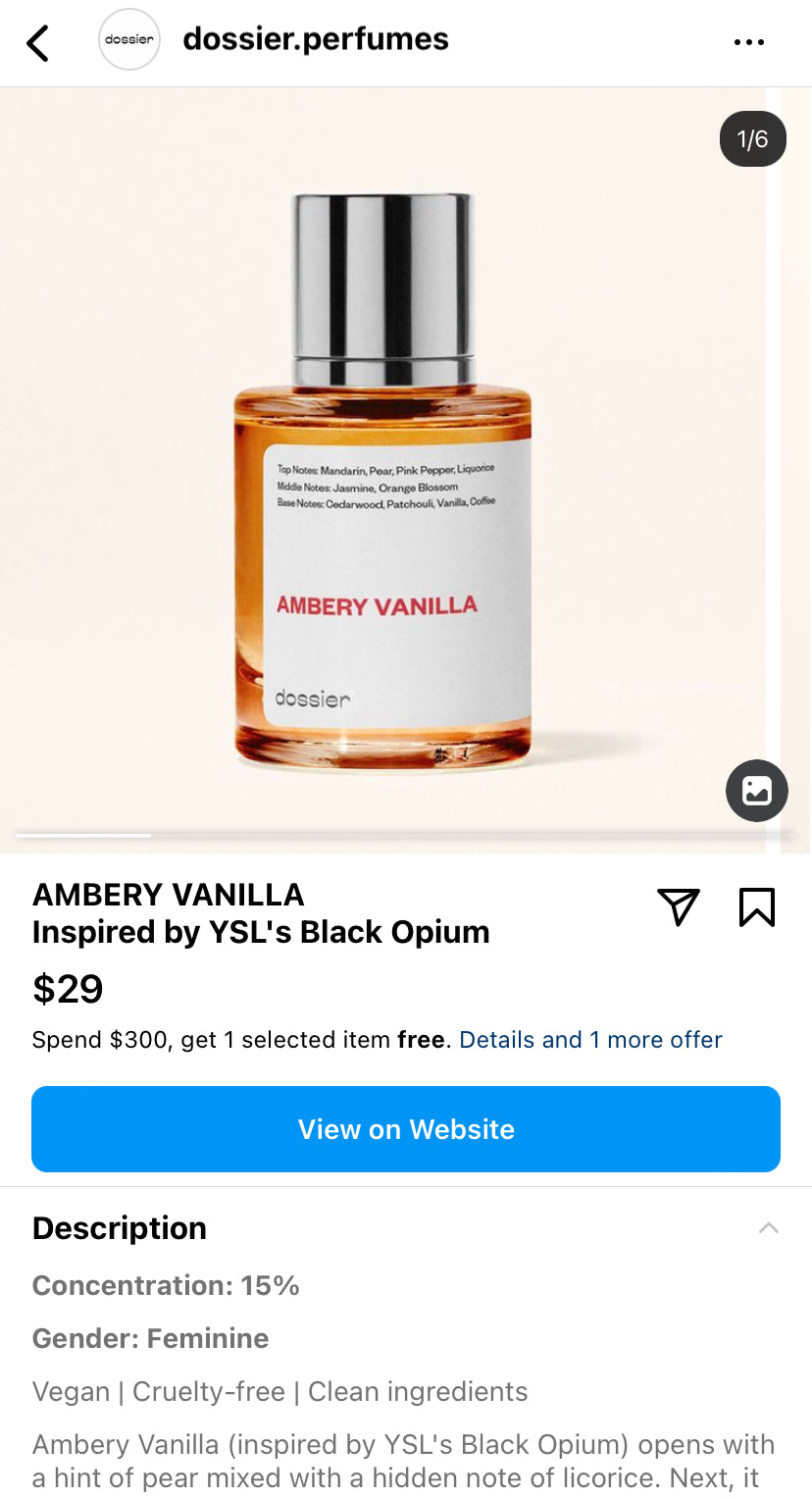
6 benefits of using Instagram for an ecommerce Store
Other than the potential boost in ecommerce sales, using Instagram Shops brings retail businesses plenty of other benefits too.
Here are the top six benefits of Instagram ecommerce:
Instagram Shopping features make it easier to convert
Loyal customers will promote your product
Interact with customers more easily
Reach more of your target audience
People are open to advertising
Improves brand awareness
1. Instagram Shopping features make it easier to convert
Instagram Shopping removes friction from the buying process. Around 44% of social media users have made at least one purchase via Instagram. That’s likely due to how easy Instagram Shopping makes it to discover and purchase products.
Instead of having to leave the platform and search for products on a brand’s website, shoppers can simply tap tagged products and check out within the app.
Using Shopify integration, brands can automatically sync products to Instagram and create shoppable posts and ads. This simplifies the importation process and makes it easy for merchants to bring the look and feel of their Shopify store to Instagram shops.
2. Loyal customers will promote your product
Shoppers who like your products enough may post a snap of them with the product. This UGC (user-generated content) is a convincing form of free advertising. If other Instagram users see relatable people using your products, they’ll be more likely to tap Buy.
Encourage customers to post and tag your products with a branded hashtag. Then reshare the best examples of UGC with your audience.
3. Interact with customers more easily
The median average engagement rate for an Instagram post across all industries is 4.59 percent, which doesn’t sound like much, but it’s more than 10 times as much as Facebook, and 20 times more than Twitter. This makes Instagram an ideal place to engage and interact with consumers more easily.
Plus with DMs, contact buttons, comments, and Stories, it’s much easier to interact with customers on a more personal level.
4. Reach more of your target audience
Given Instagram's enormous global reach, it makes it easier to get to your brand’s target audience. Plus, many people are actively viewing business profiles to discover products and services. In fact, eighty-three percent of Instagram users discover new products and services on the platform, and over 200 million visit at least one business profile per day.
5. People are open to advertising
People don’t just use Instagram to interact with friends and family anymore. Users are open to being advertised products and services on the app. Ninety percent of Instagram users follow a brand on Instagram, and 50% say they’re more interested in a brand when they see Instagram ads for it.
People follow brands to be the first to find out about new products and services. So don’t be afraid to run promotional campaigns––you may find you see a large uptick in conversions. Eighty-seven percent of users say they take action after seeing a product on Instagram.
6. Improves brand awareness
According to Meta, 44% of people say they’re open to shopping from new brands they discover on social media. People are already actively looking for products on social apps, so Instagram is an ideal place to improve brand awareness.
7 examples of ecommerce stores using Instagram Shops
To help inspire your next Instagram ecommerce marketing campaign, take a look at these seven examples of Instagram ecommerce stores leading the way.
Beardbrand
Beardbrand is a male grooming and personal care brand with a huge focus on educating Instagram followers on beard care, grooming tips, and product ingredients. A physical retail space helps them produce educational content, perform market research, and interact with customers personally.
Beardbrand’s Instagram Shop showcases its bestselling products and new launches, and helpfully sells product bundles so shoppers can easily find what they’re looking for. Users can quickly see a full product description and check out within the app.
Tentree
Apparel brand Tentree carries strong sustainable values, and these are reflected throughout its Instagram content.
For every item sold, Tentree plants 10 trees, with a goal of planting over a billion trees by 2030. The brand manufactures clothing with hemp, cork, and organic cotton. Tentree’s Instagram account features educational posts about sourcing sustainable materials, plenty of on-brand UGC, and giveaways.
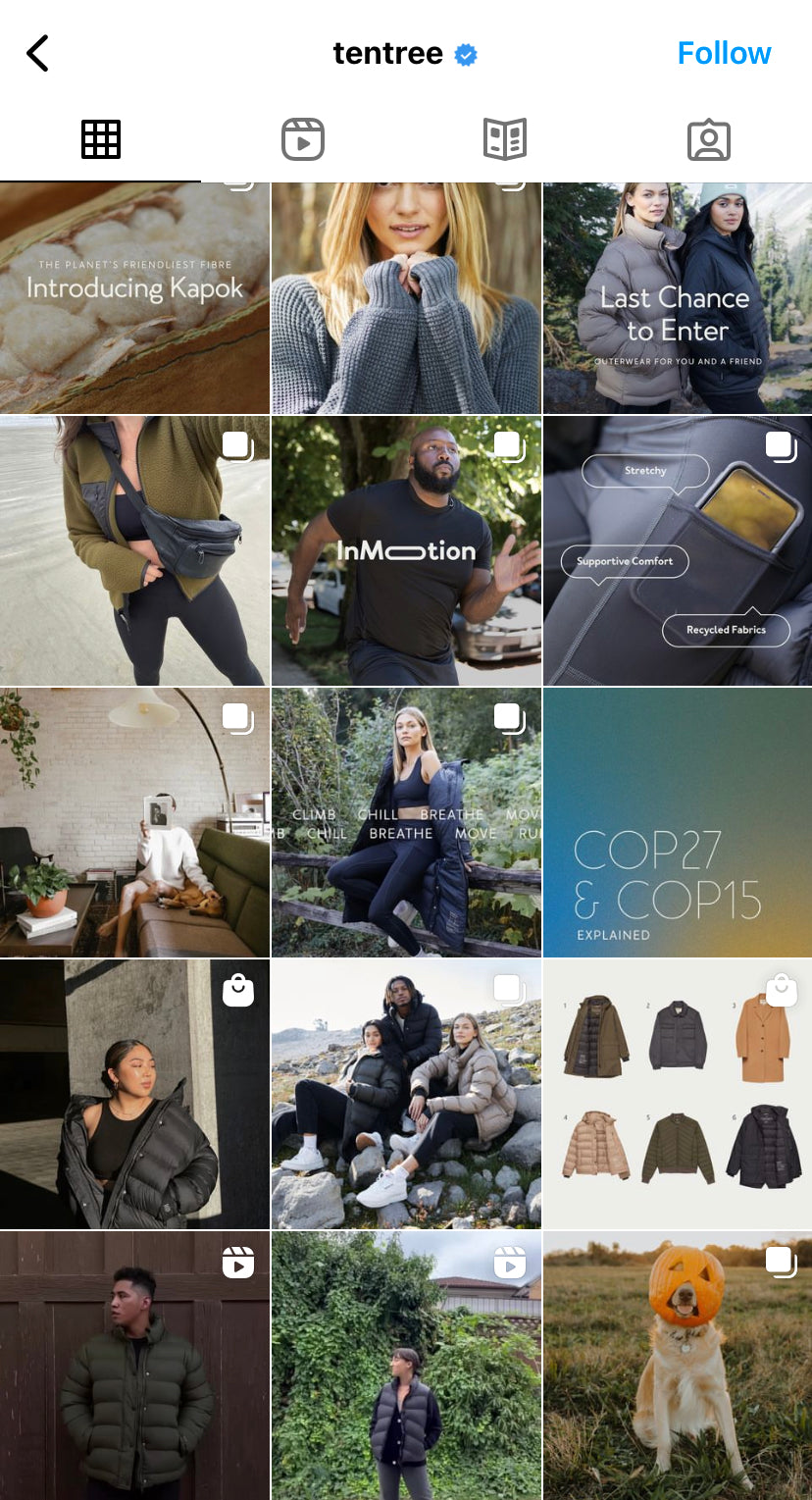
Cowboy Bikes
Electric bike brand Cowboy Bikes sells electric bikes geared to urban cyclists. The account features cityscape shots of its products in action. The brand provides plenty of details on how to use its app with its connected electric bikes.
There are also mentions of its environmental accolades, like a B Corp company certification. Within the brand’s Instagram Shop, the bikes are organized by collection, making it easy to find each one.
Allbirds
Sustainable footwear brand Allbirds uses its Instagram Shop to promote its products and educate consumers about its environmental goals. Shoppable posts easily allow consumers to tap through to product pages and make purchases. The brand partners with influencers and reposts UGC to connect with its audience.
Throughout the account, Allbirds shares its story and the why behind its environmental pledges.
Package Free
Package Free has a well-organized Instagram Shop that makes it simple for shoppers to find the items they’re looking for. Products are organized by categories like Kitchen, Bath & Body, and Zero Waste Kits. An “On the Go” section highlights items that form a part of consumers’ daily routines.
The brand’s shoppable Instagram Stories offer another avenue for customers to interact with products.
Meow Meow Tweet
Meow Meow Tweet is dedicated to creating clean vegan products—everything from deodorants to candles. Product images are key to any ecommerce brand, but even more so to a business marketing its products on visual Instagram. The brand’s vibrant images pop and draw the shopper into tapping product tags.
Within the Shop, products are carefully categorized according to their use making it easy to find what you’re looking for.
Lunchskins
Lunchskins sells reusable food storage bags and recyclable paper sandwich bags on its Instagram Shop. To boost engagement, the brand features product giveaways and shares quick healthy lunch ideas so consumers can get the most out of the product. The brand’s virtual storefront features an easy-to-navigate product catalog.
5 Instagram strategies fit for any ecommerce store
Here are five key strategies to help you build a successful Instagram ecommerce store.
Tag products
By using shopping tags, you easily make your Instagram posts shoppable. Product tags let users quickly see product detail pages that include pricing and descriptions. A second tap takes shoppers through to the seller’s Instagram shop, where they can buy the product. These shoppable posts can also feature as Instagram ads.
Meow Meow Tweet encourages consumers to purchase products directly through Instagram via its tagged shoppable posts. Each product is tagged and linked so shoppers can get more product information and purchase them more easily.
Brands can also use shoppable stickers in Stories to help users tap through to the products they like.

Work with influencers
People trust other people’s opinions over brands, especially when the content is more authentic. Influencers can be a powerful way of getting your products in front of more of your target audience.
Choose influencers who have high engagement rates instead of going for the highest follower counts. For brands looking to partner with influencers, audience size no longer stands as the only indication of success, according to Glossy’s Influencer Index.
Plus, in a survey of US adults, 61% said they were interested in brands providing authentic content. For ecommerce brands, this may mean partnering with nano-influencers and micro-influencers. These accounts with fewer than 100,000 followers are often perceived as more authentic and relatable than celebrity-endorsed posts.
Allbirds frequently collaborates with influencer Ethan Glenn to amplify the brand’s reach on Instagram.
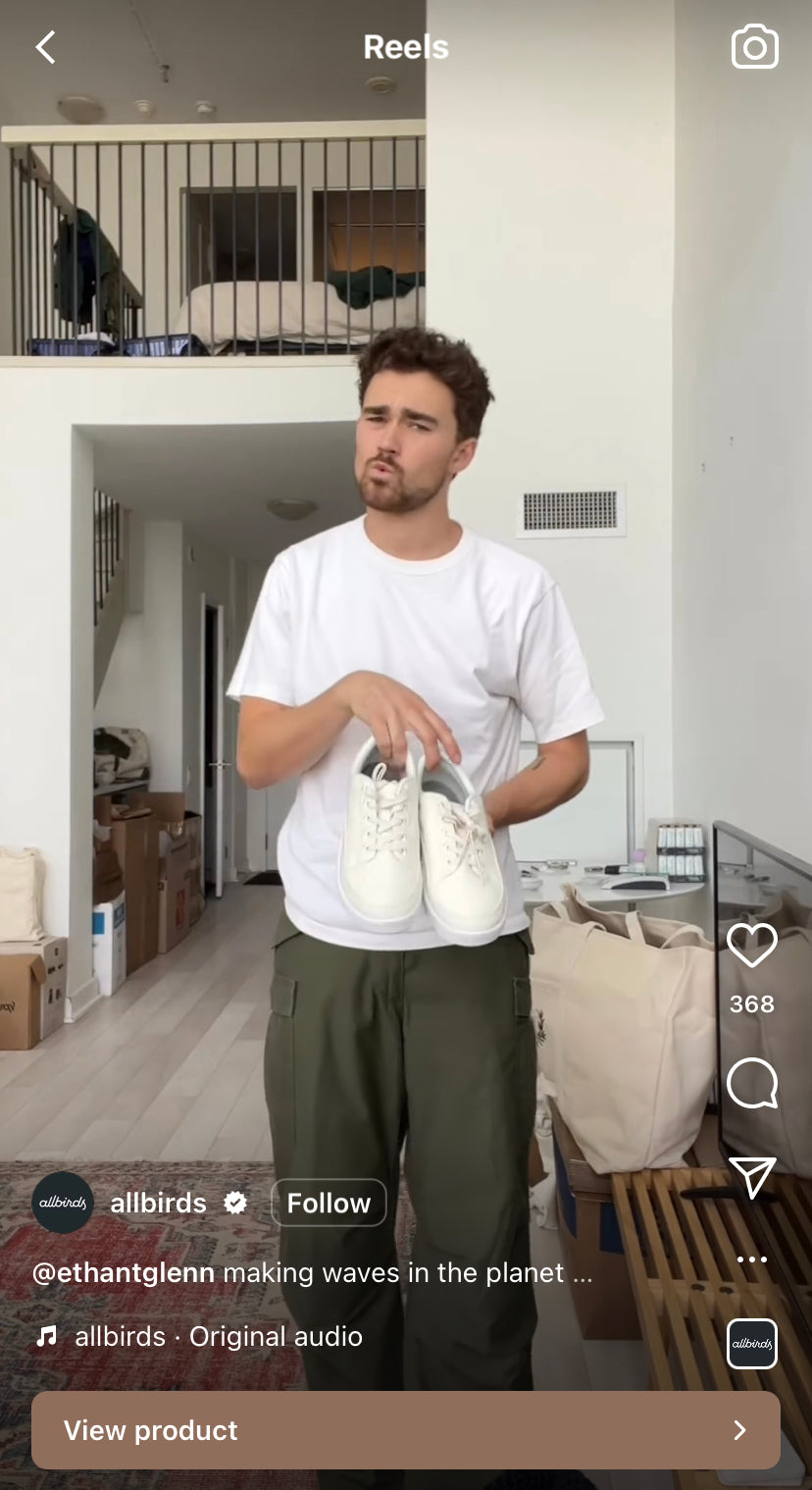
Shopify Collabs allows approved creators to earn revenue by partnering with Shopify merchants. Following Shopify's April 2022 acquisition of influencer marketing company Dovetale, the platform launch is the latest step in fueling merchant growth.
Using Collabs, sellers and influencers can connect, collaborate, and sell products in front of new audiences across social platforms. Merchants can set their own terms for paying for content and negotiate rates with creators.
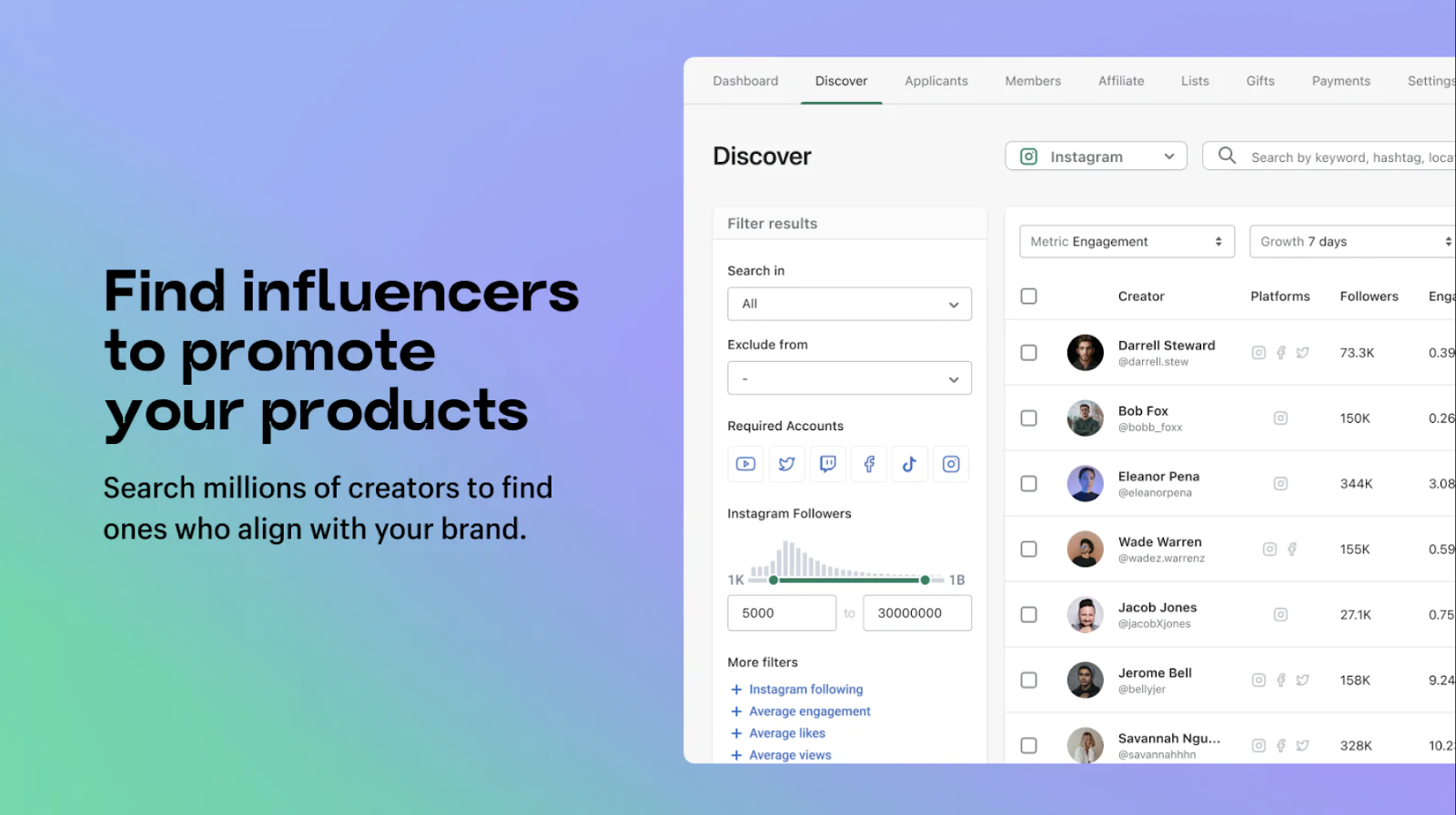
Set up giveaways
Instagram giveaways are a great way to build interest and excitement around your brand’s products. Set up regular giveaways around holiday periods and product launches in the year. Make it easy for people to participate by providing clear instructions on how to enter.
You could ask people to use hashtags with their posts. Or you might ask users to tag five of their friends in the comments.
Lunchskins runs generous giveaways to encourage people to promote the brand. In this one, users must follow six different accounts and enter via the link in the brand’s bio. For any additional entries, users can tag other accounts in the comments.

Encourage user-generated content
Forty-two percent of consumers say user-generated content was most influential when making beauty, health, and wellness purchasing decisions. The best part of UGC is that it’s a free and easy way of getting your brand in front of more of your target audience.
Encourage loyal followers to post images of your products with relevant hashtags and a tag of your brand. Pick the ones that reflect your branding the most and reshare them with your followers.
Sustainable clothing brand Tentree encourages customers to share pictures of their outfit styling with the hashtag #EarthStuff. The account then shares a selection with its audience.
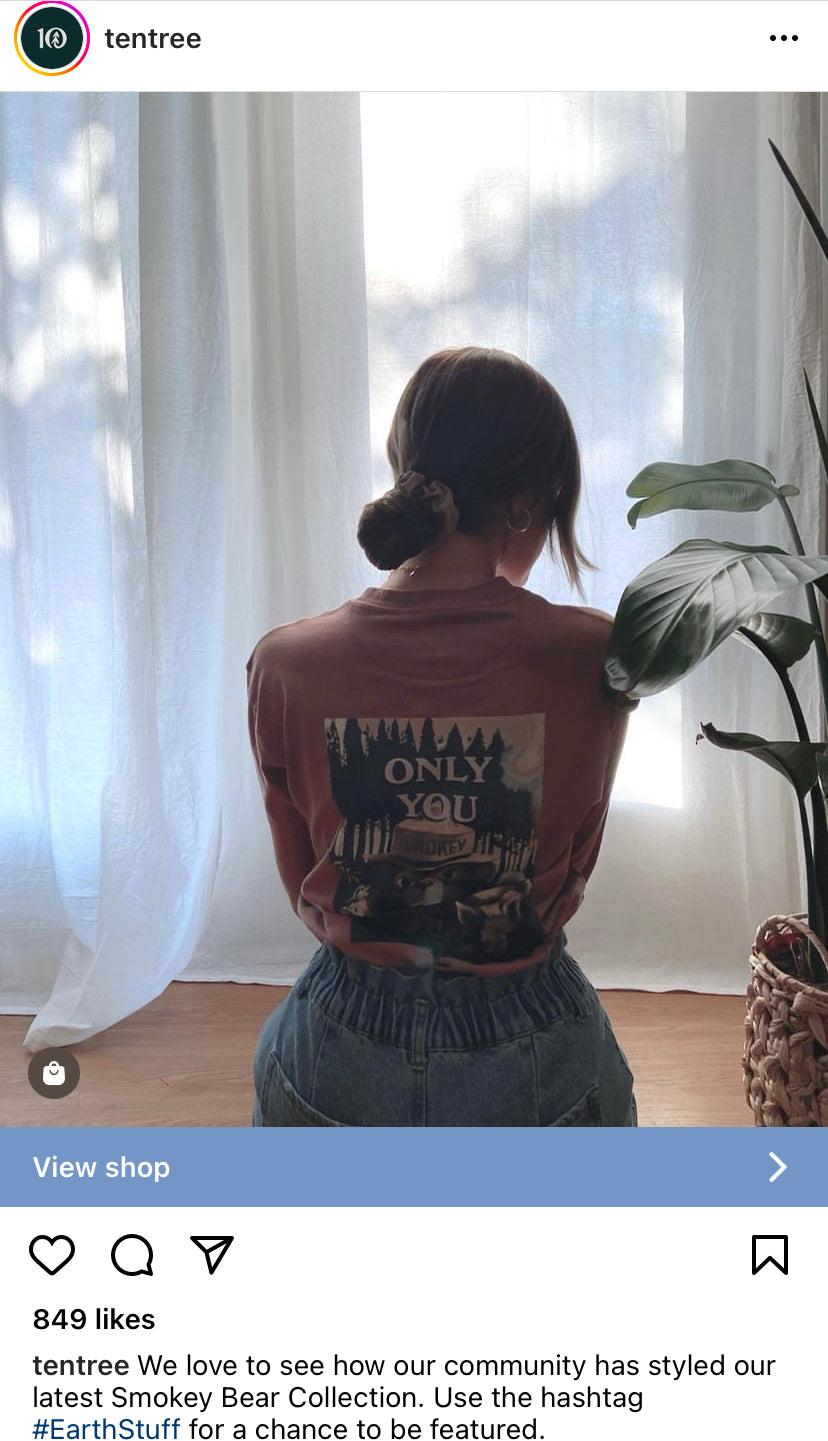
Review Instagram analytics
In-built Instagram analytics highlight what’s working and what isn’t in your Instagram ecommerce strategy. Hard numeric metrics provide valuable insight into where you could improve your marketing.
Review your audience insights to see whether your target audience is interacting with your posts. Analyze what time is the best time to engage with followers and if your account is tapping into these times. Set a few KPIs so you can more easily see from your analytics if your account is performing in line with your goals.
Reach your Instagram ecommerce goals in 2024
The stats show that Instagram ecommerce is only set to grow in 2024 and beyond. As the number of Instagram shoppers rises, the app will continue to release more features in a bid to capture spending.
To attract potential customers, brands need to optimize their Instagram marketing strategy and find new ways of converting their audience. Find the type of content that resonates with your audience best and then share it regularly.
Read more
- How You Can Profit from Personalizing Content on Your Ecommerce Store
- Multi-Channel Ecommerce: Are eBay & Amazon the Enemy?
- Back-to-School Marketing: Ideas, Stats & How to Automate the “Other” Black Friday
- Warning: Most Conversion Optimization Tips Are BS (Here's Why!)
- 14 Video Ads That Blew Our Minds In 2015
- Ecommerce Customer Service: Holiday Insights Direct from 10 Industry Leaders
- The 1 Rule for Building a Billion-Dollar Business
- 7 Conversion Rate Optimization Experts Answer the Questions You Were Too Afraid to Ask
- Consumer Psychology: Sell to the Person Behind the Persona
Instagram Ecommerce FAQ
1. Is Instagram good for ecommerce?
Instagram has multiple shopping functionalities, including Buy buttons, Instagram checkout, product tags, and shoppable posts that make it a great place for ecommerce brands to sell their products.
Plus, around 44% of people use the platform to shop weekly.
2. How do I set up ecommerce on Instagram?
To set up ecommerce on Instagram follow these steps:
Switch to an Instagram business account.
Upload your product catalog.
Submit your shop for review.
Switch on Instagram Shopping.
3. Which ecommerce platform is best for Instagram?
Shopify lets you integrate your online store with Instagram Shop so your product catalog seamlessly connects with the Instagram app. That way your Instagram Shop has the same look and feel as your Shopify store.
4. What are the benefits of using Instagram as an ecommerce platform?
The main benefits of using Instagram as an ecommerce platform are:
New features like shopping posts and Instagram checkout
Followers promote products through UGC
Easier to personally interact with customers
Reach a global target audience
People are open to advertising
Boosts brand awareness


